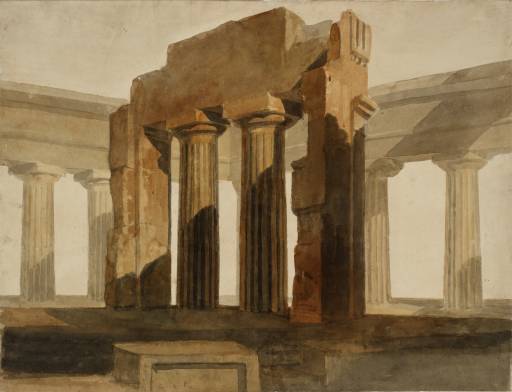1909
A.J. Finberg, A Complete Inventory of the Drawings of the Turner Bequest, London 1909, vol.I, p.589, CXCV 102, as ‘Doric columns and entablature’.
1992
Maurice Davies, Turner as Professor: The Artist and Linear Perspective, exhibition catalogue, Tate Gallery, London 1992, pp.23, 28, reproduced in colour fig.14.
1994
Maurice William Davies, ‘J.M.W. Turner’s Approach to Perspective in His Royal Academy Lectures of 1811’, unpublished Ph.D thesis, Courtauld Institute of Art, London 1994, pp.272, 281 (BB f12), 282 (BB f18).
2006
Helen Dorey, ‘Turner and Soane: Illuminating a Friendship’, Turner Society News, No.104, December 2006, pp.11, 15 note 8.
2007
Helen Dorey, John Soane & J.M.W. Turner: Illuminating a Friendship, exhibition catalogue, Sir John Soane’s Museum, London 2007, pp.10, 18, 24 reproduced in colour.

